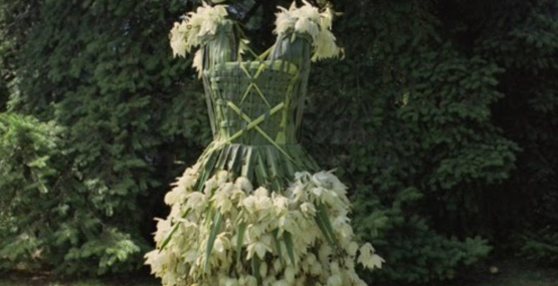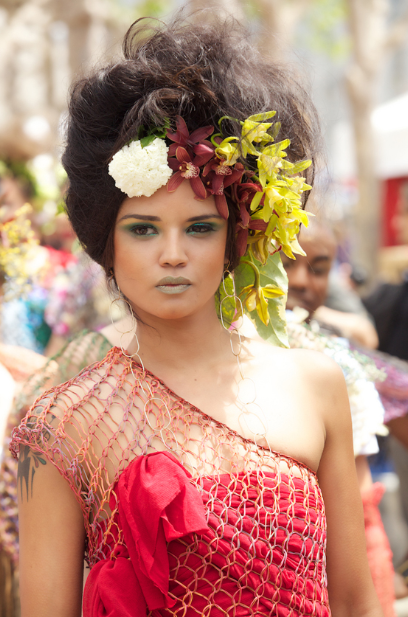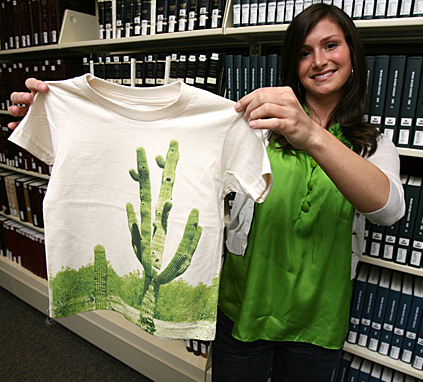Ecostyle is a direction that has its own philosophy and attitude to life. Clothes play a leading role here. Along with urbanization and industrialization, more and more people are striving for “Mother Earth”. At a subconscious level, a person at a certain age begins to understand the importance of nature in his life and how important it is to protect the world around him.
What kind of clothing style is eco?
Eco-style is things made from absolutely natural fabrics without ornate cut, complex decisions in style, frankness and vulgarity. Naturalness, modesty, prudence are the main features of the style. A person who chooses it leads a healthy lifestyle, plays sports, and is in harmony with himself and the world around him.

@wellandgood.com
The eco movement originated in the last century and at first had a “rebellious” character. Some people rebelled against progress, the introduction of chemistry into human everyday life and the killing of animals for the sake of beautiful clothes and shoes. In the 70s of the last century, the “hippie” movement acquired large-scale proportions.The subculture was practically given the rank of a religious movement and promoted the desire to love nature and pacifism.
Today, eco-style has won many hearts, including famous couturiers. Philosophy is followed by some stars and politicians. Clothes in this genre are not cheap, so not everyone can afford to save nature in this way..

@ilovegreeninspiration.com
Style Features
The essence of the fashion trend is simple - all details must be of natural origin. However, the concept of eco-style also has a deeper meaning.
"Right" materials
Fabric for clothing should be natural, created from raw materials grown in nature. For example, if this is the wool of a ram, then the animal should live in freedom, eat only grass and gifts of nature, and its cutting is extremely painless! And if it is flax material, then the raw material must be grown on the field and without chemical fertilizers.
Of course, obtaining materials in this way is incredibly difficult, time-consuming, and costly. Exactly therefore, eco-friendly clothing is considered one of the most expensive in the world. After processing, fabrics must have appropriate certificates.

@medium.com
Loose fit
The clothes do not restrict movement, the tailoring is of high quality. But this is not a robe or a “bag”, but a beautifully fitting item. A prerequisite is that you should like it, a person should feel cozy and comfortable in it. Besides, awareness of the “environmental friendliness” of clothing adds one’s own value in the world, and therefore self-confidence.
Minimal waste during production
An important aspect of eco-direction. All details of the image must be produced in conditions of minimal environmental pollution and production waste.. Therefore, eco-things are often made manually, without attracting mass participation.If you make beads from amber in a single copy, then nature will hardly suffer, but if you “put it on stream”, the result for the world can be disastrous.

@moneycrashers.com
Recyclable
You can’t just throw away clothes or an element of eco-style. It must be possible to reuse raw materials for their further use in human life.
Ethnic elements in design
Styles, design, decoration should be simple, “taken from the people”. Old Slavonic motifs, decoration with ornaments, ribbons, and embroidery fit well here. Details made from rope elements, wood, burlap, and stones have proven themselves to be excellent.

@ilovegreeninspiration.com
Materials, colors, nuances
Fabric preference first natural cotton, wool, linen, bamboo, burlap, calico. Straw and twine trim often play a decisive role. Wooden accessories, stone beads, earrings fits perfectly into the style. Silk and wool scarves, shawls, stoles are a great idea.

@ilovegreeninspiration.com
Most The color of “burlap” is considered popular - the color of an ear of wheat, straw. In addition, these are discreet shades green, gray, brown, white, milky, black, as well as dirty pink, muted yellow, scarlet and electric blue. All of them are dim and have a matte undertone.
Images and prints are definitely worth noting. This is a must natural motives – animals, birds, insects, elements, vegetation.
Important! If clothing contains “impregnations” of non-natural origin (for example, elastic bands), they are covered with the “correct” fabric to avoid contact with the skin.

@news.utoledo.edu
How is it different from boho and the like?
Eco-clothing is not just things, it is a philosophy of life. It is impossible to wear a dress made of expensive sheep's wool grown in distant meadows and leather boots made of calf at the same time. The “eco” image is the harmony of body, spirit and clothing. And boho is a fashionable style that implies naturalness, but not in everything and not always.


 1
1





